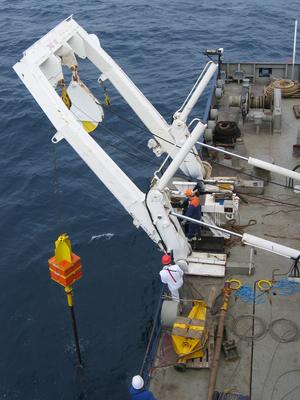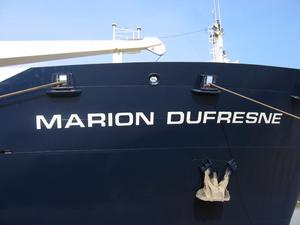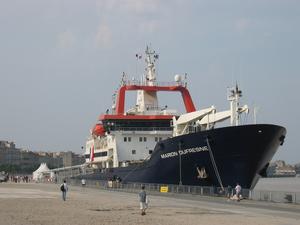
The Calypso coring system |
Scientific Equipment and facilities
- Coring: Giant-corer handling system called CALYPSO, allowing for 10t
and 60m long cores, which makes the vessel Marion Dufresne the world
holder. It displays an integrated heavy sampling system made of a new
generation of 30t band capstan winch (aramide cable compatible), and
3 drums holding 7500 m of large diameter cable (up to 30 mm), among others.
- Navigation: 3 GPS (with SkyFix differential correction), Doppler
log, Gyrocompass, time server, GPS-aided inertial navigation system (Pos
MV320), ultra short base line underwater objects positioning system
(Posidonia), and dynamic vessel positioning system (Simrad Albatross).
- Environment: weather monitoring station, acoustic anemometer,
2 circuits for clean sea water, 2 continuous sampling thermosalinographs,
2 acoustic Doppler current profilers, 3 CTDs, and a 24-bottle rosette.
- Geophysics: sediment-penetrating, dual frequency multibeam
echosounder of 12 and/or 3.5 kHz Thomson, analog echosounder, quadri-frequency,
monobeam echosounder, proton sensor marine magnetometer, marine gravimeter
Lacoste & Romberg, and 2 onboard seismic compressors.
- Computing and telecommunications: data acquisition and archiving,
video control room, 10/100 Mbps Ethernet network, intranet Sun, HP and IBM
workstations, PCs, plotters and printers, softwares (GMT, Caraibes for
seafloor imaging), 2 Inmarsat terminals, and batched email and data
transmission by 64 kbits Inmarsat B connection.
|


